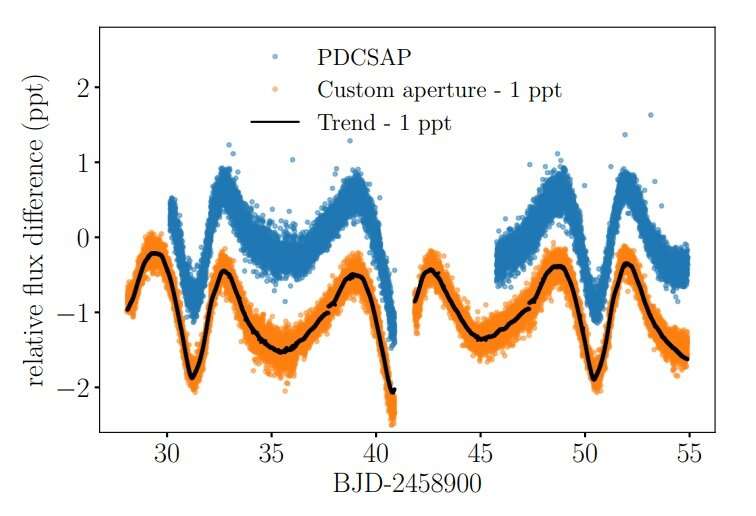August 11, 2022 report
Solar-like oscillations and ellipsoidal variations detected in binary system 12 Boötis

Using NASA's Transiting Exoplanet Survey Satellite (TESS), an international team of astronomers has detected solar-like oscillations and ellipsoidal variations in the light curve of a binary system known as 12 Boötis (or 12 Boo for short). The finding is reported in a paper published August 3 on the arXiv pre-print server.
In cool stars like our sun (with effective temperatures below 6,500 K), near-surface convection drives and damps oscillations across a wide range of frequencies. These oscillations are known as solar-like oscillations. Finding and investigating such oscillations could be crucial for testing various stellar models.
Located some 122 light years away from the Earth, 12 Boötis (other designations HR 5304, HD 123999, TIC 418010485) is a bright binary system in the constellation Boötes. It comprises two stars with a mass of around 1.4 solar masses in a slightly eccentric 9.6-day orbit.
Now, a group of researchers led by Warrick H. Ball of the University of Birmingham, U.K., reports that 12 Boötis exhibits solar-like oscillations and also ellipsoidal variations. The finding is based on the analysis of TESS light curves obtained in early 2020.
"We present here our analysis of the TESS light curve of 12 Boo, which includes the first detection of solar-like oscillations and ellipsoidal variations in this system," the astronomers wrote in the paper.
By analyzing TESS light curves, the team made a marginal detection of solar-like oscillations in 12 Boo A—the primary star in the system. The data also allowed the scientists to identify clear ellipsoidal variations and to recover several days of data near the beginnings of TESS's orbits.
According to the paper, the solar-like oscillations turned out to be not clear enough to unambiguously measure individual mode frequencies of 12 Boo, which could shed more light on the nature of the system. However, the astronomers managed to combine global asteroseismic parameters and a precise fit to the spectral energy distribution (SED) to provide new constraints on the known properties of this binary.
The research found that 12 Boo A has a radius of about 2.45 solar radii and luminosity of approximately 7.53 solar luminosities. The star is about 1.9 times larger than the sun and its luminosity is at a level of 4.69 solar luminosities. Both stars are 2.66 billion years old and have metallicities of around -0.065.
The authors of the study noted that their results significantly improve the properties of 12 Boo that have been reported in the literature. They added that more sophisticated analysis of the light curve and power spectrum of this system is required in order to understand its individual mode frequencies.
More information: Warrick H. Ball et al, Solar-like oscillations and ellipsoidal variations in TESS observations of the binary 12 Boötis. arXiv:2208.02302v1 [astro-ph.SR], arxiv.org/abs/2208.02302
© 2022 Science X Network





















